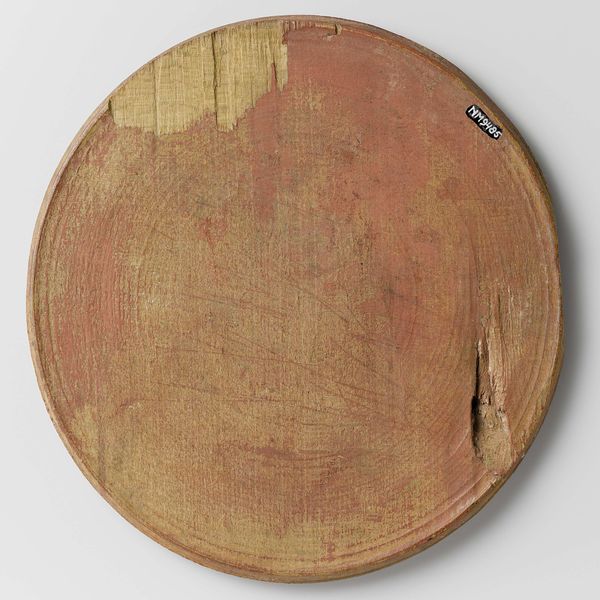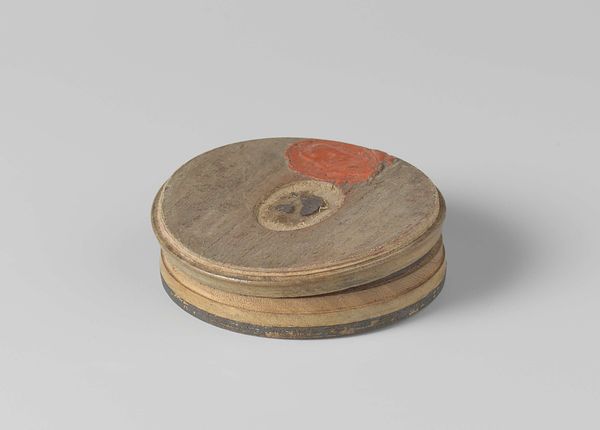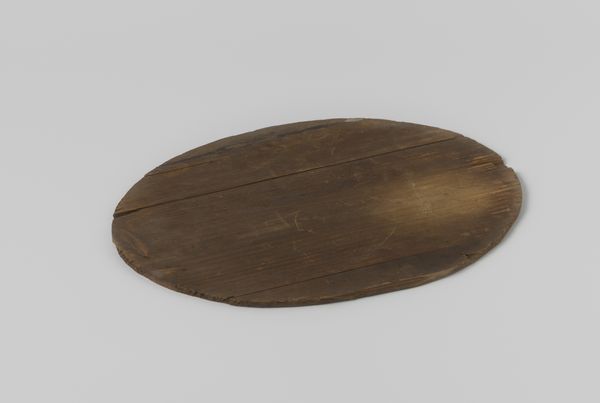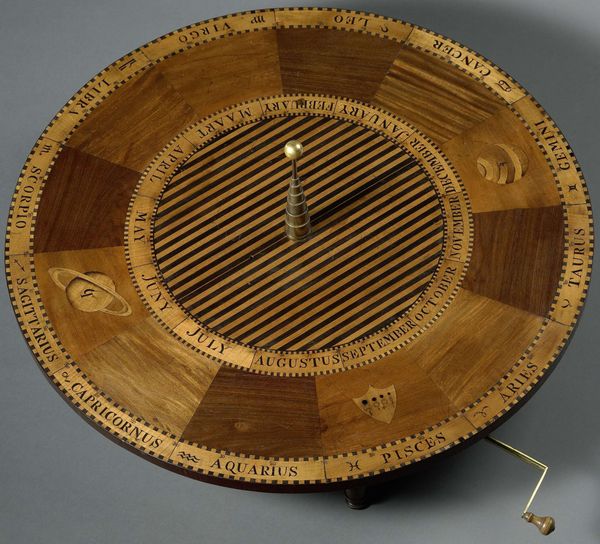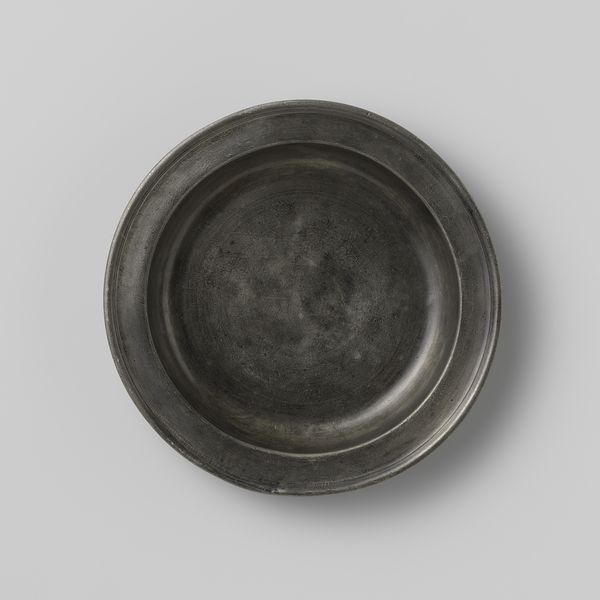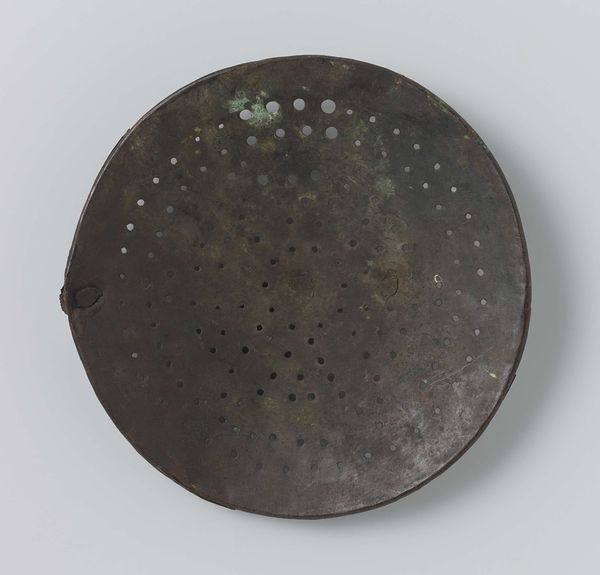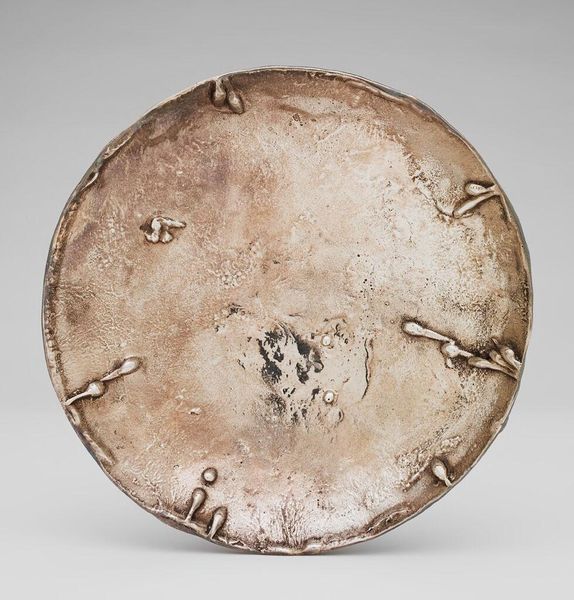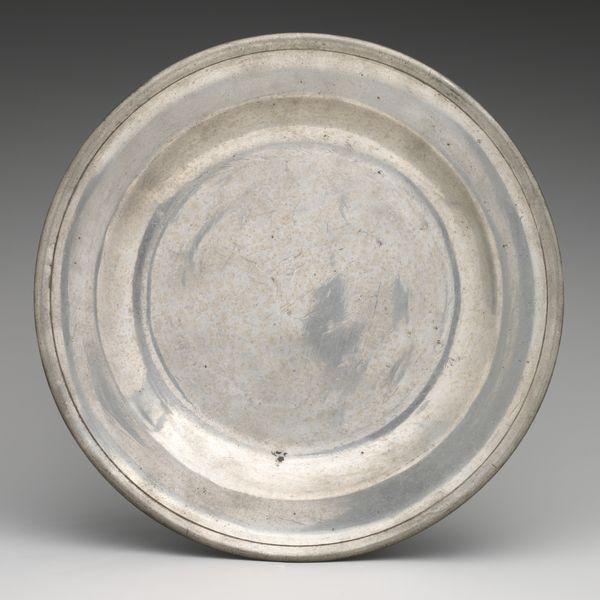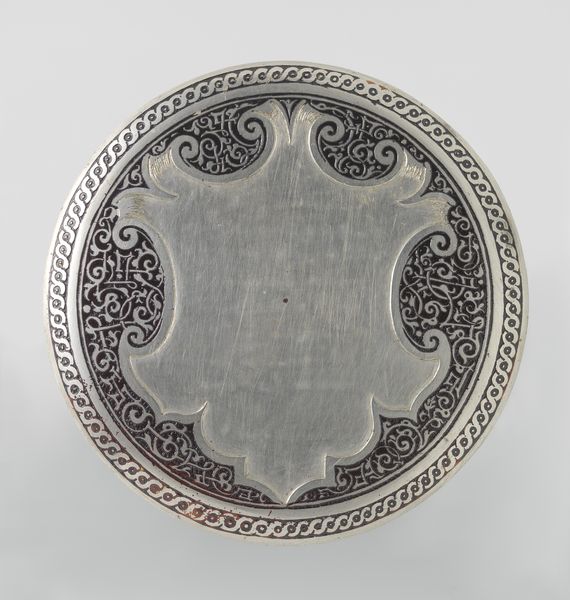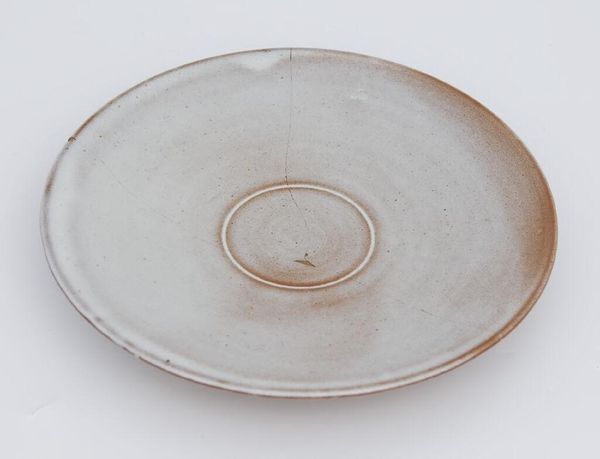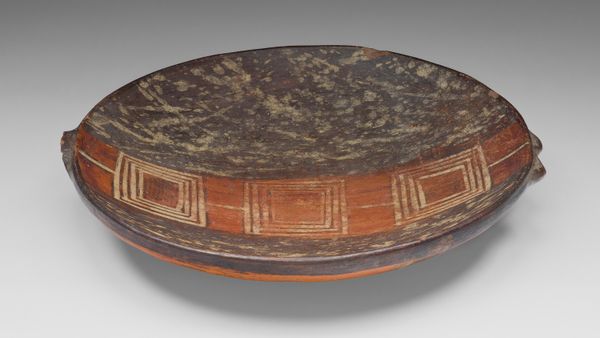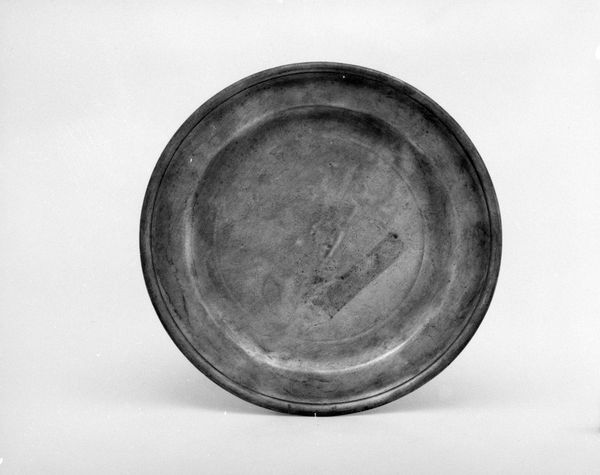
earthenware
#
medieval
#
oil painting
#
earthenware
#
earthenware
Copyright: Rijks Museum: Open Domain
Curator: The Rijksmuseum holds a fascinating, unassuming piece titled "Household Effects," crafted anonymously around 1590-1596. Editor: It's strangely compelling! Almost meditative with those concentric rings. Is it earthenware? There is an intense austerity that’s appealing, almost sculptural. Curator: Indeed, the medium is earthenware. What makes it intriguing to me is imagining its social context, particularly around production. This plate wasn't just made; it was part of a system of craft and domestic labor. Who molded the clay, and how were they compensated? These objects tell a silent history of early industries. Editor: And for whom was this utilitarian item made? What stories could it tell? Given its condition and age, one wonders if its survival was down to simply being commonplace—not particularly worthy of disposal—which ultimately is part of its historic charm. Did earthenware function beyond simple utility? Was there any ritual aspect involved? Curator: That’s right. Remember, around this time period in the Netherlands, social classes were very visible through their consumption, thus even functional objects reflect on it. Editor: What is remarkable about this particular piece is that it brings the distant past into a physical, palpable reality. This humble plate probably witnessed births, deaths, celebrations, hardships... it served at silent meals and noisy family gatherings. The daily ritual it participated in becomes tangible through its mere survival. Curator: Thinking about it further, it really causes you to reassess those strict boundaries museums try to enforce on what qualifies as worthy art, because what this represents as an ordinary, yet significant material history is quite profound. Editor: Absolutely. By recognizing the story within everyday objects like this humble piece of earthenware, museums invite visitors to make historical connections that feel profoundly human.
Comments
rijksmuseum about 2 years ago
⋮
Among the remnants from the ‘Safe House’ were many utilitarian household objects, such as plates, cutlery and brushes. The taps originally were attached to wooden barrels containing water or wine. The ‘spike candleholders’, which could be hammered into a wooden beam, were particularly convenient.
Join the conversation
Join millions of artists and users on Artera today and experience the ultimate creative platform.
